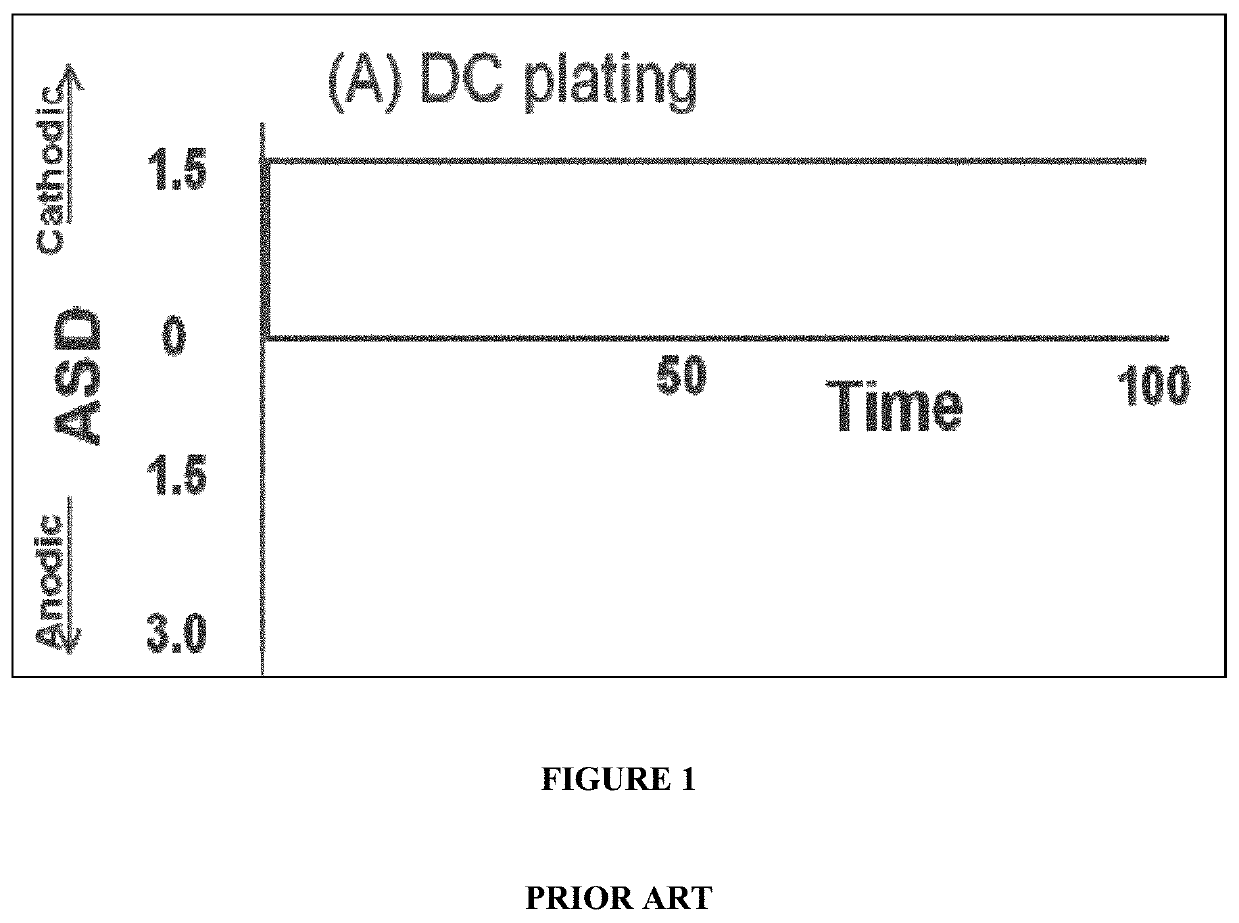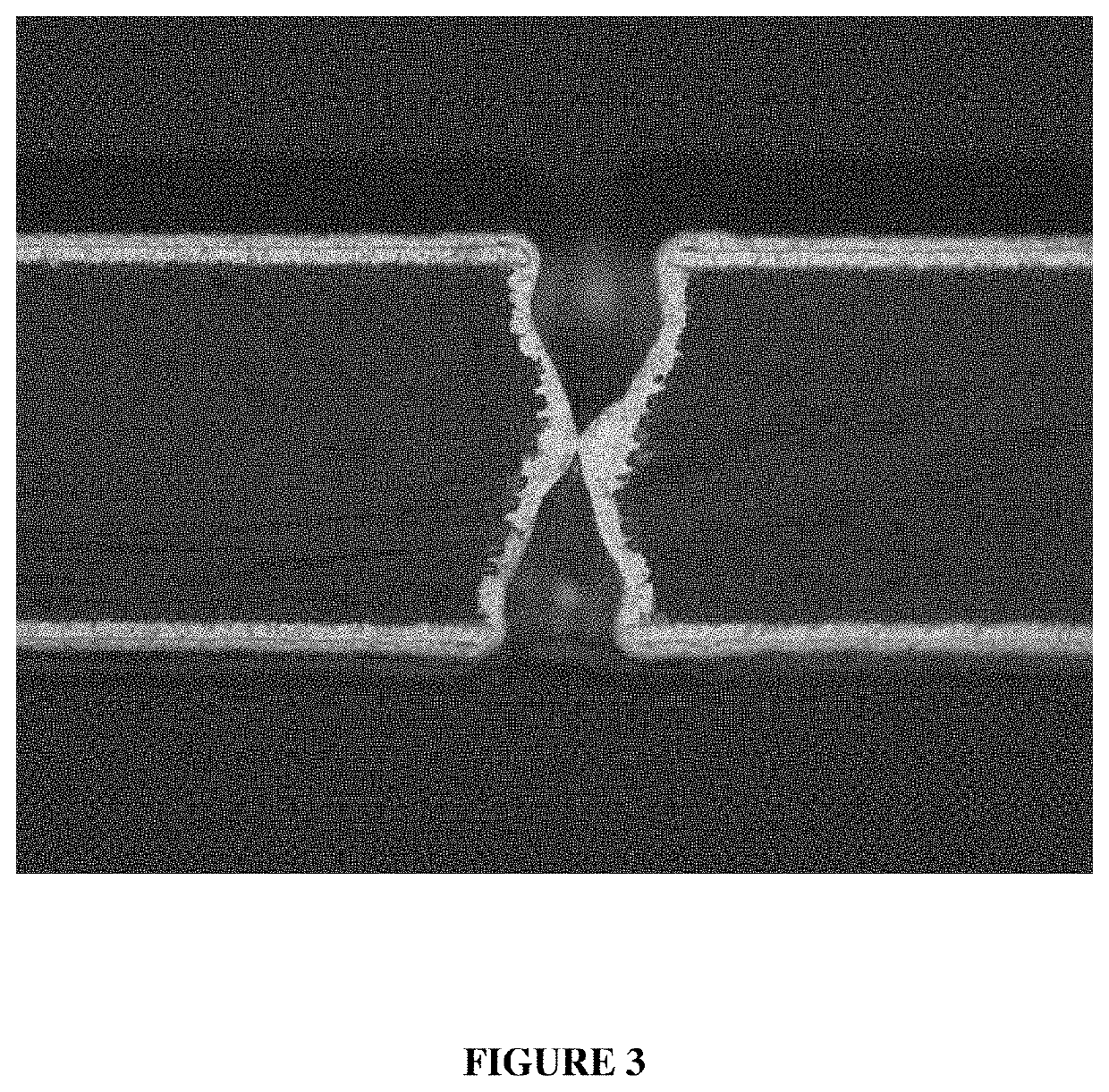Method of filling through-holes to reduce voids and other defects
a technology of through-holes and defects, applied in the direction of superimposed coating process, liquid/solution decomposition chemical coating, coating, etc., can solve the problems of copper plating's inability to reduce the void and other defects, the way they tend to fill, and the difficulty of filling through-holes with copper plating with higher aspect ratios, so as to reduce or inhibit the formation of dimples and voids, good through-hole filling, and the effect of improving throwing
- Summary
- Abstract
- Description
- Claims
- Application Information
AI Technical Summary
Benefits of technology
Problems solved by technology
Method used
Image
Examples
example 1
[0041]An FR4 / glass-epoxy coupon 5 cm wide, 15 cm long and 200 μm thick with a plurality of through-holes was provided by Tech Circuit. The through-holes had an average diameter of 100 μm. The coupon was plated with CIRCUPOSIT™ 880 Electroless Process plating formulation and method (available from Dow Electronic Materials, Marlborough, Mass.) to form a copper layer on one side of the coupon and on the walls of the through-holes. The thickness of the copper layer on the coupon was 0.3 μm. The coupon was pre-cleaned using a conventional copper cleaner. The coupon was then placed in a Haring cell which contained a copper electroplating bath with a formula as shown in the Table.
[0042]
TABLECOMPONENTAMOUNTCopper sulfate pentahydrate220 g / LSulfuric acid 40 g / LChloride ion from hydrochloric acid 50 ppmPolyethylene glycol 2 g / L4-phenylimidazole / imidazole / 1,4-butandiol 50 mg / Ldiglycidyl ether copolymerBis-sodium sulfopropyl)-disulfide 10 mg / L
[0043]The coupon was connected to a conventional DC ...
PUM
| Property | Measurement | Unit |
|---|---|---|
| diameters | aaaaa | aaaaa |
| diameters | aaaaa | aaaaa |
| diameters | aaaaa | aaaaa |
Abstract
Description
Claims
Application Information
 Login to View More
Login to View More - R&D
- Intellectual Property
- Life Sciences
- Materials
- Tech Scout
- Unparalleled Data Quality
- Higher Quality Content
- 60% Fewer Hallucinations
Browse by: Latest US Patents, China's latest patents, Technical Efficacy Thesaurus, Application Domain, Technology Topic, Popular Technical Reports.
© 2025 PatSnap. All rights reserved.Legal|Privacy policy|Modern Slavery Act Transparency Statement|Sitemap|About US| Contact US: help@patsnap.com



